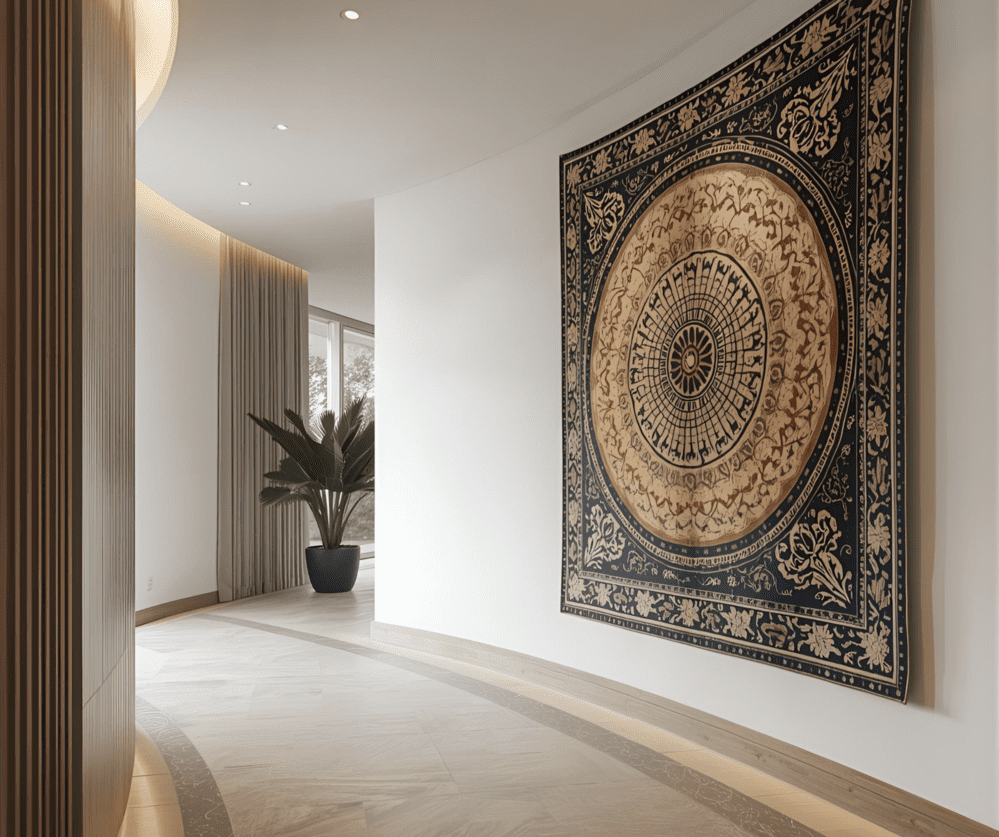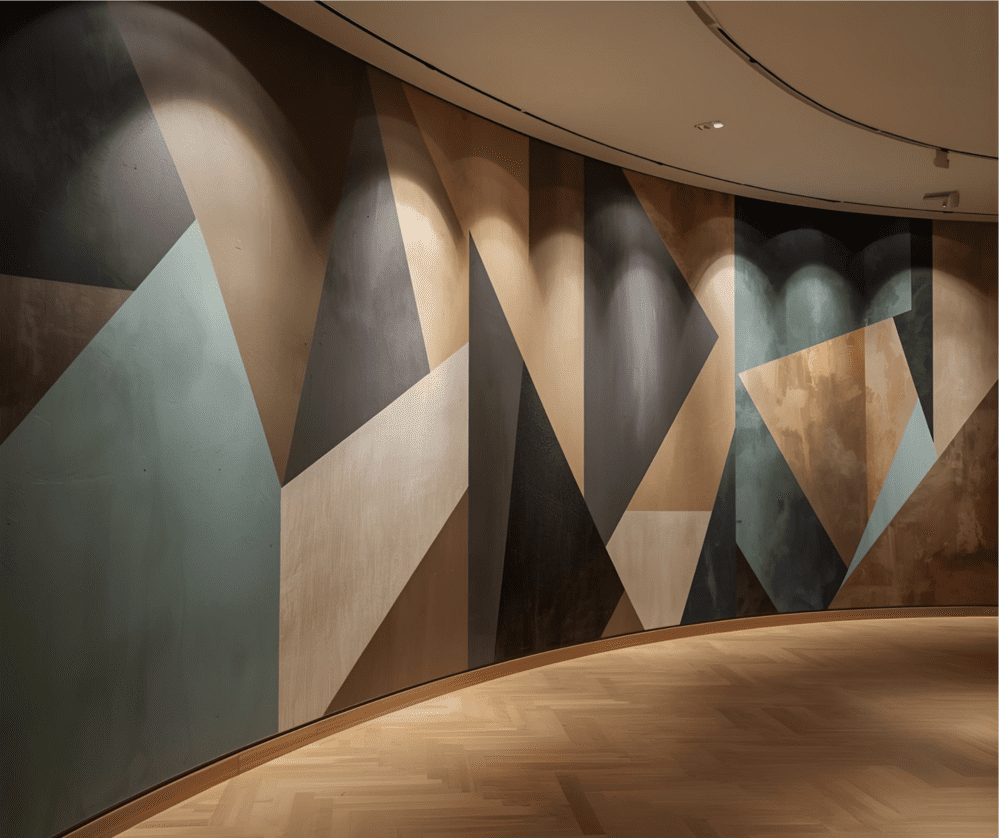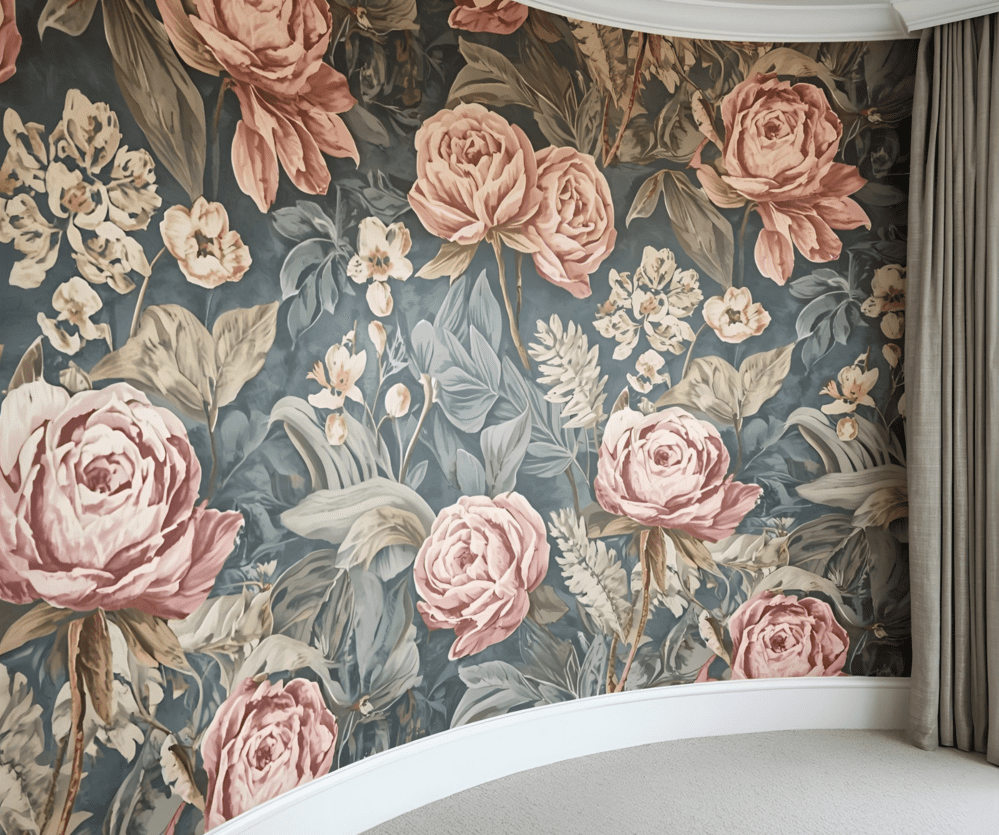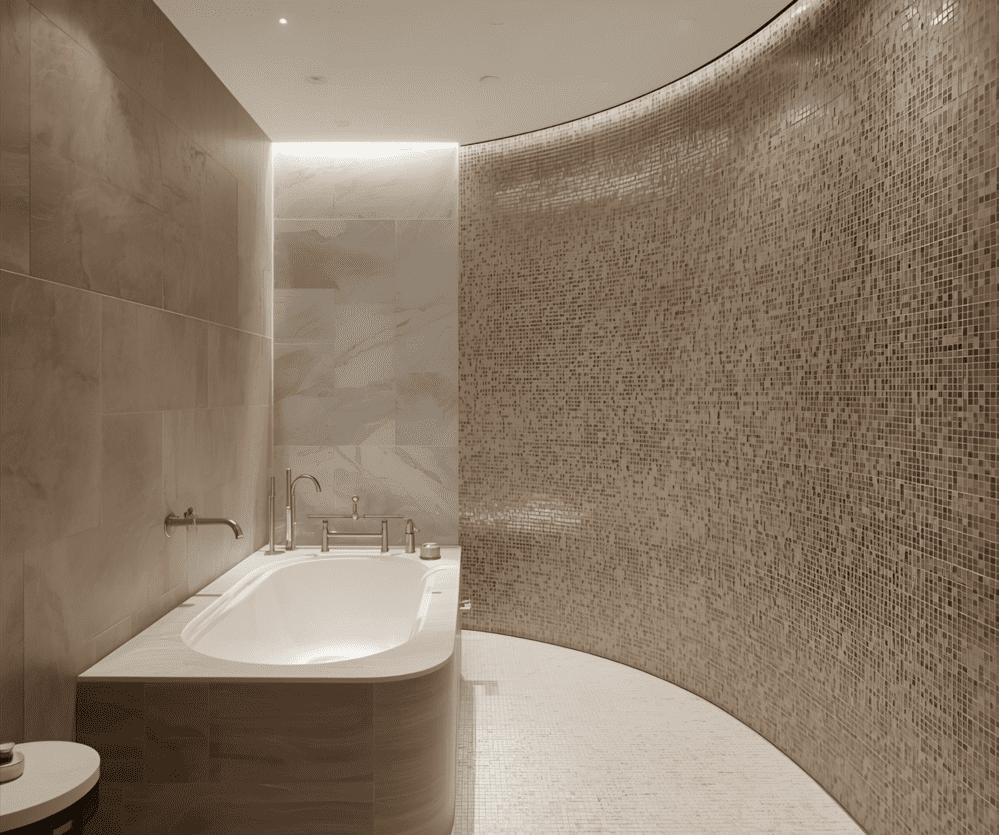How to Design a Curved Wall
If you have a space in your home with a curved wall, you already know how tricky it can be to decorate. Conventional artwork or wall art, don’t sit flush against the curve, leaving the wall looking awkward and if left alone, they can look UN-finished or forgotten.
Sometimes, a curved wall can stand beautifully on its own — but other times, it feels like a large, unused canvas in need of a focal point. That’s where design strategy comes in.
In this post, we’ll share five creative ideas on how to design a curved wall so it enhances your space and becomes a feature you love.
1. Tapestries or Textiles
I know — you might be rolling your eyes and thinking, “Really, a tapestry? What is this, the 1800s?” Don’t worry, I’ve got you covered (pun intended). Today’s wall hangings and textiles are far from dated — there are so many beautiful, modern designs available that can feel fresh and stylish in the right space.
The wonderful thing about tapestries is that they naturally follow the curve of the wall. They’re soft, flexible, and lightweight, which makes them an excellent solution when you want to cover a lot of surface area without being intrusive. Because they’re made of fabric, they also work well in narrower spaces where bulky artwork might overwhelm.
With a little creativity — and the right mounting hardware — tapestries and textiles can transform a curved wall into a focal point that feels intentional and contemporary.
Mounting Options for Tapestries and Textiles
There are several ways to secure a tapestry or textile to a curved wall. The best option depends on the size, weight, and style of the piece, as well as how permanent you want the installation to be.
a) Heavy-Duty Velcro
One of the most economical and renter-friendly methods is heavy-duty Velcro strips designed for fabric. This makes installation easy for almost anyone — no sewing required — and allows you to remove the tapestry for cleaning or repositioning. For a longer-lasting hold, you could sew the Velcro onto the fabric, but the sticky-back version works well for lightweight textiles.
b) Decorative Push Pins or Nails
A quick and budget-friendly method is to use decorative push pins or small nails. These add their own visual detail and can complement the textile itself. However, keep in mind that repeated removal and re-installation may enlarge the pinholes over time. This option works best for lightweight or temporary displays.
c) Curtain Rod or Dowel System
For a more polished look, attach the tapestry to a Custom curved curtain rod or rounded wooden dowel, and then mount the rod using brackets. This method distributes the weight evenly, prevents sagging, and makes the piece look intentional — almost like a piece of framed art. It’s especially effective for larger or heavier textiles.
d) Upholstery or Command Strips
If you prefer a no-damage solution, large-format adhesive strips (like Command strips) can work for lighter fabrics. Upholstery strips, which grip fabric tightly, are another option. Just make sure the wall surface is smooth and clean for best adhesion.

A tapestry easily follows a curved wall, adding softness and style.”
2. Paint Graphics
Paint graphics are growing in popularity and can transform a curved wall into a standout feature. The best part? They’re fully customizable to your unique style and taste.
You could choose to paint the entire wall for a bold effect, or create a graphic zone that feels more like a piece of art than a full-wall treatment. Both approaches allow you to add personality and dimension in a way that’s affordable and highly creative.
A graphic detail brings an outside-the-box aesthetic to your home. And because it’s just paint, it can be easily covered if your style changes — or if you decide to sell your home. Since not all buyers will appreciate a bold wall graphic, you can always neutralize the wall or offer to repaint before closing.

A wall mural transforms a curved wall into a bold statement.
3. Wallpaper
Wallpaper has officially made its comeback — and it’s everywhere in today’s leading design shows and magazines.
While it can be an investment, wallpaper is one of the best ways to bring colour, pattern, and personality to a curved wall. Unlike traditional art or décor, wallpaper hugs the curve naturally, creating a seamless and stylish look.
Wallpaper is available in both paper and vinyl. Vinyl is especially practical in kitchens and bathrooms, where walls are exposed to humidity or condensation. Beyond traditional rolls, you can also find mural-style wallpaper, which creates a scene across the wall instead of a repeating print. This option can turn a curved wall into a dramatic focal point.

Bold and Beautiful Wallpaper
4. Trim Detail
This aesthetic has been around for ages and has proven to be timeless in design. Most commonly, you might know it as wainscot, which is traditionally applied either halfway or a third of the way up the wall, leaving the upper portion painted. It’s often seen on a curved staircase and can look quite grand.
With wainscot, you can really express your creative side through both trim design and paint options. For example:
-
Two-tone walls: paint the upper portion a different colour for contrast.
-
Painted trim: choose a colour that pops against the wall.
-
Trim styles: flat stock trim for a modern approach, or ornate trim for a more traditional feel.
This versatility makes wainscot a dependable choice for curved walls, whether you want a crisp modern vibe or a classic look.
Modern Alternative: Fluted or Slat Panels
If you want a more contemporary take, consider vertical slat (fluted) panels. These panels naturally wrap a curved wall, adding depth, texture, and warmth. They’ve become popular in modern interiors because they:
-
Follow curves seamlessly without bulky transitions.
-
Add shadow lines and rhythm to the wall surface.
-
Work in a variety of finishes, from natural wood tones to paint-grade MDF or laminate.
For installation, many trades use Pre-backed flexible slat panels, or they apply slats over a thin curved substrate like bending ply for a flawless arc. Adding an LED reveal line at the top or bottom can also elevate the look and highlight the curve.

Mosaic tiles flex naturally to wrap curved walls in kitchens, baths, or entryways.
5. Mosaic Tile or Stone
Because your wall is curved, using a mosaic tile is often the best solution. Mosaics are made up of small pieces of tile or stone that are attached to a mesh backing, which makes them flexible and able to bend naturally with the wall’s shape.
This opens up endless design possibilities. With today’s wide variety of tile prints, colors, and patterns, mosaics can add dimension, texture, and visual interest to your space while also serving a functional purpose. They are particularly effective for creating a statement wall in entries, hallways, bathrooms, or kitchens.
Another advantage of tile is its practicality. Many options, such as porcelain mosaics, are durable, stain resistant, and easy to clean—making them ideal for wet zones or high-traffic areas. You can also explore stone mosaics (like marble or slate) for a more natural, timeless feel.
If you want to make a bold impact, consider a mosaic mural or geometric pattern. For a subtler look, go with monochrome stone pieces that bring depth without overwhelming the space. Either way, mosaic tile offers a versatile and long-lasting solution for dressing up a curved wall.

Modern Bathroom With Curved Mosaic Wall
Final Thoughts
Designing around a curved wall can feel intimidating at first, but it’s also an incredible opportunity to express your personal style and bring something truly unique into your home. The key is to see it as a creative challenge rather than a limitation.
Whether you choose textiles, paint, wallpaper, trim, or mosaic tile, each option gives you the chance to highlight your space in a way that feels intentional and inspiring. Don’t be afraid to experiment, and when in doubt, consult with a trade professional or interior designer who can help you refine your vision and bring it to life.
Remember—design should always be fun, collaborative, and an extension of who you are. A thoughtfully designed curved wall can quickly turn into a focal point that sparks joy for you and conversation among your family and friends.


